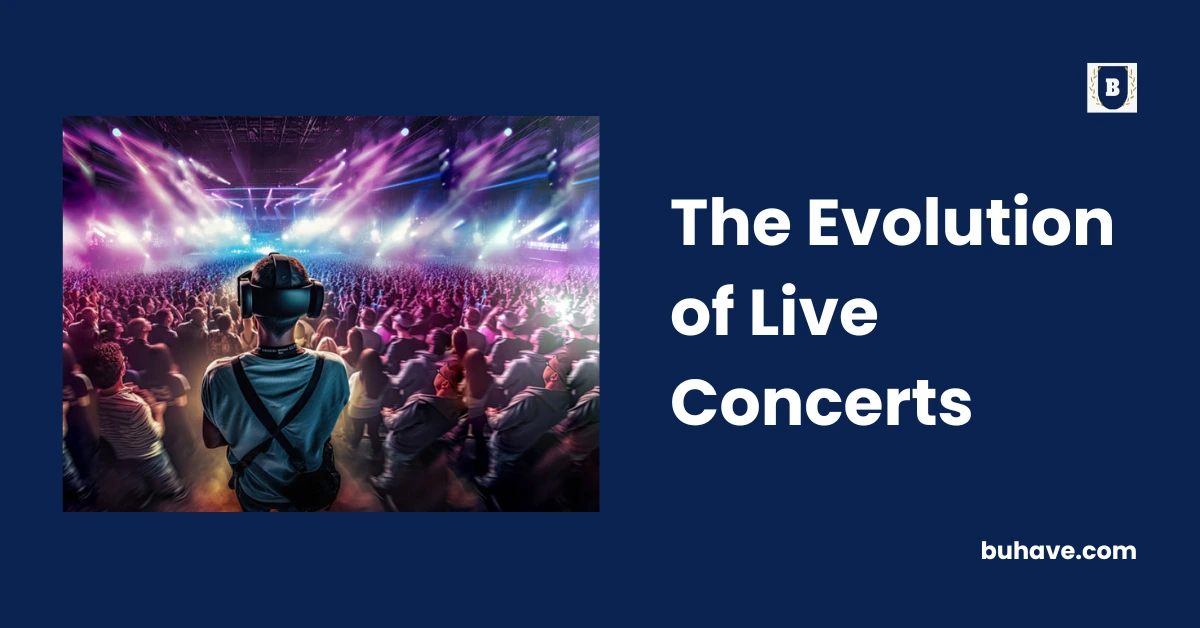Live concerts have experienced a profound evolution driven by advancements in technology. In an age where digital innovation continually reshapes our world, the live music experience is not behind. If you’re wondering how technology is shaping the future of live music, get ready to discover here!
Digital audio workstation (DAW)
DAWs are essential for pre-show preparations, including creating and arranging tracks, designing soundscapes, and programming MIDI sequences.
The DAW market is projected to develop to USD 4.95 billion by 2027, with a CAGR of 8.1% from 2022-2027.
DAWs enable the playback of back, click tracks, and synchronized visuals during live performances, enhancing the overall experience.
Ensure the DAW is compatible with your hardware, operating system, and any plugins or virtual instruments you plan to use.
Get a DAW known for stability, as live performances require software that won’t crash or freeze during a show. If you use MIDI controllers or external control surfaces, check if the DAW supports them effectively.
A DAW with an intuitive and user-friendly interface can streamline your workflow during the high-pressure environment of a live concert.
Platforms for booking musicians and performance venue
The most daunting task for event venues is to find the right live performer. You can easily seek some on platforms specifically made for this to speed up this process.
For instance, Gigit is the ultimate new-gen platform to connect and book artists online for that unforgettable experience.
Connect with fellow musicians and industry professionals. List your venue and attract the perfect acts for your audience!
On the other hand, if you’re an artist, you can engage with the audience in real-time and build excitement leading up to the concert.
Some offer targeted advertising to reach specific audiences effectively. Artists can use social media to make concert announcements, share teaser content, and create anticipation among fans.
Augmented reality and virtual reality
VR technology allows fans to attend concerts virtually from the comfort of their homes, offering a 360-degree view of the performance.
AR and VR can introduce interactive elements into live concerts, such as 3D visuals, holographic effects, and virtual avatars of artists.
Consider the hardware requirements. VR typically requires headsets like Oculus Rift or HTC Vive, while AR experiences can be delivered through smartphones or smart glasses.
Determine how you’ll create the AR or VR content. This may involve working with developers, 3D designers, or specialized software tools. Complex or confusing AR/VR interactions can frustrate users.
Whether you opt for AR, VR, or both in your live concerts, aligning the technology with your artistic vision and the audience’s expectations is key.
As AR and VR evolve, staying updated with these technologies’ latest developments and trends is crucial for creating memorable and engaging live concert experiences.
Virtual instruments
Virtual instruments provide access to an extensive library of sounds, from traditional instruments to unique and experimental ones, expanding the creative possibilities for artists.
Musicians can replace entire instrument collections with virtual instruments, reducing the need for extensive gear and making it easier to travel for performances.
Some virtual instruments have features tailored for live performances, such as easy preset switching, performance modes, and MIDI mapping options.
Geofilters
Geofilters allow event organizers and artists to create custom-branded filters that reflect the concert’s theme, logo, or messaging.
Concertgoers can use these filters to overlay unique graphics or text on their photos and videos, increasing engagement on social media during the event.
Create a visually appealing and on-brand filter that complements the concert’s theme and appeals to your target audience.
To maximize its promotional value, include essential event information, such as the concert name, date, location, or relevant hashtags.
Schedule the filter to be active during the concert’s duration, starting before the event, to build anticipation.
RFID & NFC
RFID and NFC wristbands or cards enable quick and secure access control for concertgoers, reducing long entry lines and enhancing overall venue security.
These technologies facilitate cashless transactions for food, beverages, and merchandise within the venue, streamlining the purchasing process and reducing wait times.
Prioritize security measures to protect attendees’ personal data and financial information. Implement encryption and authentication protocols to safeguard against fraud.
Ensure your staff and event personnel are adequately trained to operate and support the technology during the event.
Live streaming and virtual concerts
Live streaming enables artists to reach fans worldwide, breaking geographical barriers and expanding their audience base.
Virtual concerts provide accessibility to people with physical limitations or who live in remote areas, allowing them to enjoy live music. Live streaming can be done on platforms like YouTube or Facebook Live.
Promote your virtual concert effectively through social media, email marketing, and partnerships with influencers or other artists.
Conclusion
The transformation of live concerts through technology is an exciting journey. As the innovation continues, the boundaries of what’s possible in live music performances will expand, providing artists and audiences with new ways to connect and create unforgettable memories.
The future of live concerts holds endless possibilities, and it’s a thrilling time to be part of this evolving musical landscape.
– If you are looking for guest posts write for us technology now.

